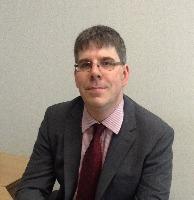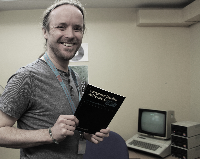Blog
Unless otherwise stated, content is shared under CC-BY-NC Licence
Hull 2017 and the City of Culture archive
Hull – City of Culture
In November 2013 Hull was announced as UK City of Culture for 2017. The scheme, echoing that of European City of Culture, seeks to use culture as the focus for regeneration. City of Culture represents a tremendous opportunity to do so much more than normal; not only in terms of our audience engagement activities but also to develop partnerships and contribute to initiatives across the city.
Long Now: Longer After
I’ve been thinking about interoperability a bit recently and wondered if it might help us frame a wider discussion on how digital preservation might integrate with the wider technology landscape. My basic thesis is that digital preservation remains a niche topic and this is bad news. For all the reasons we’ve discussed before, it’s hard to get chief technology officers, let alone finance directors to invest for the sake of the long term , but if we can build digital preservation capability for inclusion in other systems then everyone will be a winner. There are two messages here: that digital preservation vendors and their clients need to be alert to interoperability (as many already are) so that DP capacity can be deeply embedded within diverse systems; but also that digital preservation is a special case of interoperability and as such has something to offer the rest of the technology sector.
Emulation and Software Preservation at iPres 2017
Read Louise Lawson's account of sessions on Emulation and Software Preservation at iPRES 2017. Louise is attending iPRES 2017 with support from the DPC's Leadership Programme which is generously funded by our Commericial Supporters.
FAIR Data in Trustworthy Data Repositories at iPres 2017
Read Louise Lawson's account of Ingrid Dillo's key note session on FAIR and Open Data at iPRES 2017. Louise is attending iPRES 2017 with support from the DPC's Leadership Programme which is generously funded by our Commericial Supporters.
5 ways to share your International Digital Preservation Day
There are two months until our very first International Digital Preservation Day (IDPD17), and already there’s a fantastic buzz about it. People have been tweeting and emailing me since we first announced it, asking for ideas for things they could do to join in the celebrations, the fun, the party!
My favourite suggestion yet has been someone contemplating dressing up as a floppy disk at work for the day – please don’t let me stop you.
What’s great is, even aside from the dressing up, there are LOADS of ways to get involved. Whether you’re a tweeter, facebooker, instagrammer, blogger, vlogger, filmmaker extraordinaire…or you just like a good old-fashioned face to face chat with a bunch of likeminded folk, you can do any or all of those things.
PASIG 2017 - A Twitter Retelling
The Twitter coverage of the 2017 PASIG Conference, held at the Oxford University Museum of Natural History, 11th-13th September, was enthusiastic and comprehensive. Here Simon Whibley gathers together his own tweets, along with those of other conference participants, to provide an overview of the key issues raised during those 3 days in Oxford. Simon attended PASIG 2017 with support from the DPC's Leadership Programme which is generously funded by our Commericial Supporters.
Web archiving for all! Web archiving with Webrecorder
Guest blogger Anna Perricci at Rhizome introduces us to the Webrecorder
In her recent post, Sara Day Thomson described how digital preservation can be a conversation stopper at parties and at passport control. I empathize though for me the puzzlement she describes is a real paradox: as our lives turn increasingly online so it seems obvious that some evidence of our collective neuroses, passions and creativities should be preserved. Perhaps the web’s most astonishing feature is the speed at which it has become indispensable. Yet as it becomes more crucial, so it grows in size; and as it grows so it becomes more complex: and so the tools necessary to manage and preserve those essential traces of our memory face a three-fold challenge of scale, complexity and expectation.
Enter Webrecorder: ‘web archiving for all!’
Appraising Appraisal and picking the right tool for the job
For the past few years I’ve been working as Digital Archivist in Special Collections at the University of Leeds Library, and it’s been a slow and often frustrating shuffle toward a digital preservation ‘solution’ here while we try to balance that good old three legged stool of technology, organisation and resources mentioned by Sarah Mason in a previous post. I deal with literary archives and collections which are either entirely born-digital or hybrids of paper and digital, and our digital preservation workflow includes the use of both BitCurator and Archivematica.
Edinburgh Preserves: The Third Batch!
One of the really nice things about working in digital preservation is the community’s friendly, open attitude. Practitioners regularly come together in formal and informal contexts – both invaluable – to share ideas, reflect on challenges, and learn from one another. It’s a testament to our collective benevolence that these gettogethers, often attended by colleagues from highly varied backgrounds and organisations, are consistently provide confidence and inspiration in what we do.
Such exchanges can work locally, too, and Edinburgh Preserves is one example of this; a local group that brings together a merry band of practitioners from across the greater Edinburgh area (and beyond!) who work in digital preservation, for informal discussion and networking.
The Data Vanishes
It’s time to come clean: I no longer know what data is. I am looking pretty hard but I just can’t see it any more. It’s a troubling realisation for someone who has spent twenty years or so trying to preserve the stuff. But the most unsettling part is this: I don’t think it’s me who is lost. Don’t get me wrong, this is not some delayed attack of post-modern angst. I am just trying to get to the end of the day. Is it possible that, just as it was reaching a crescendo of profile, polemic and promise, data has vanished, like Bilbo Baggins on his eleventy-first birthday?

















































































































































